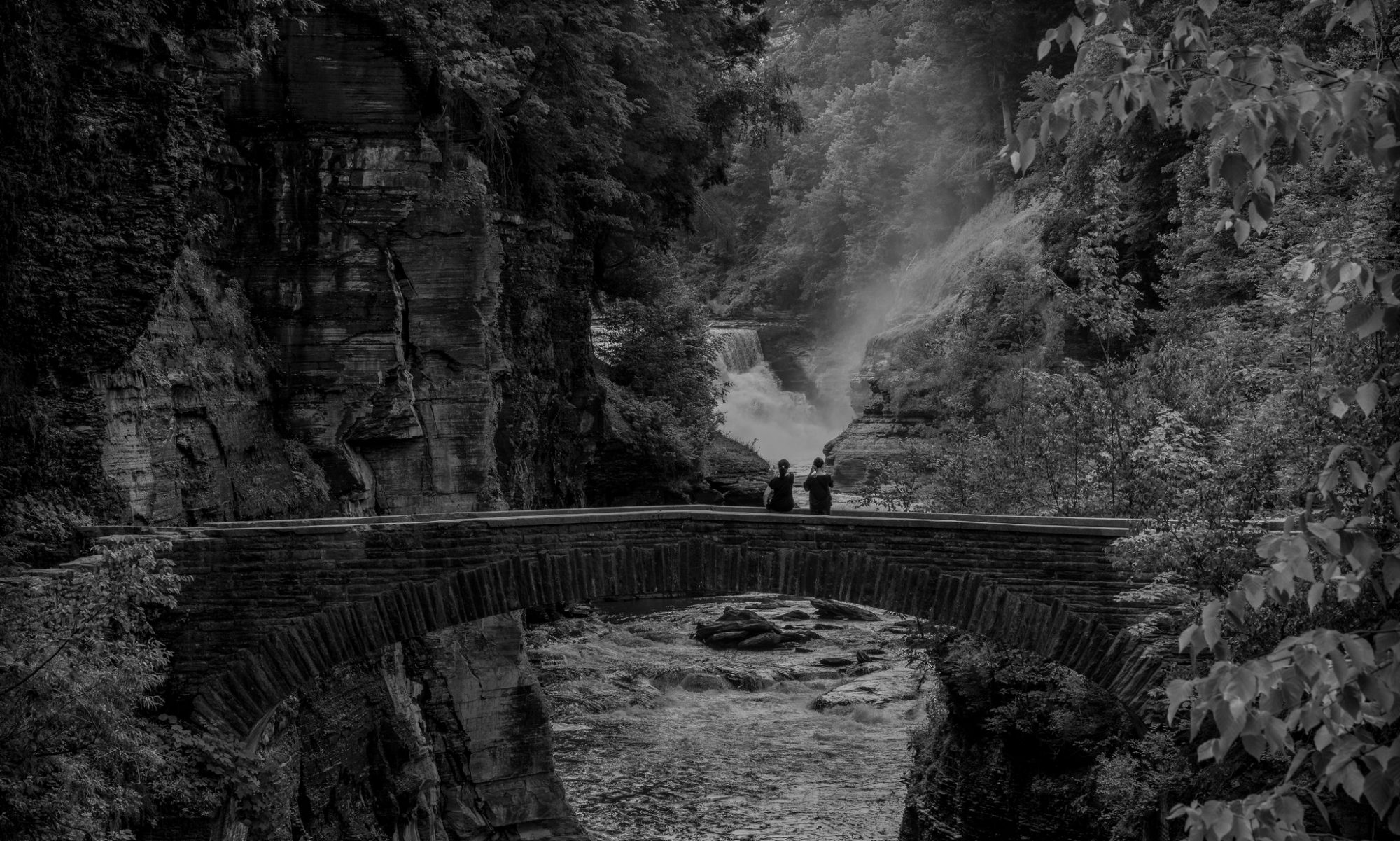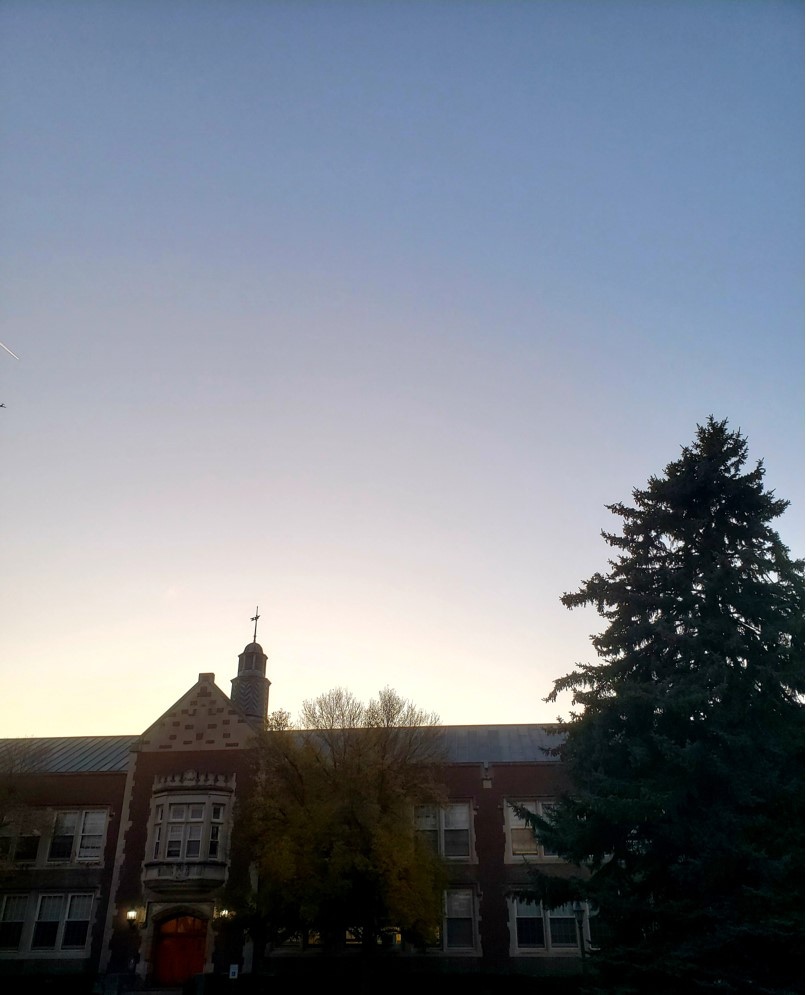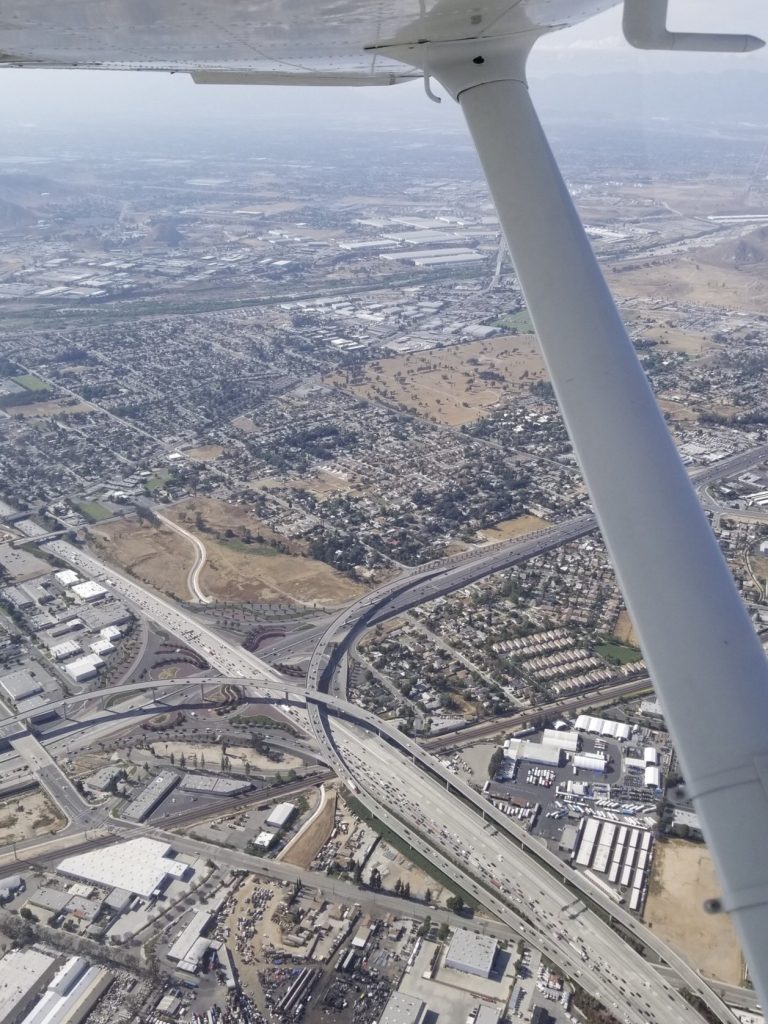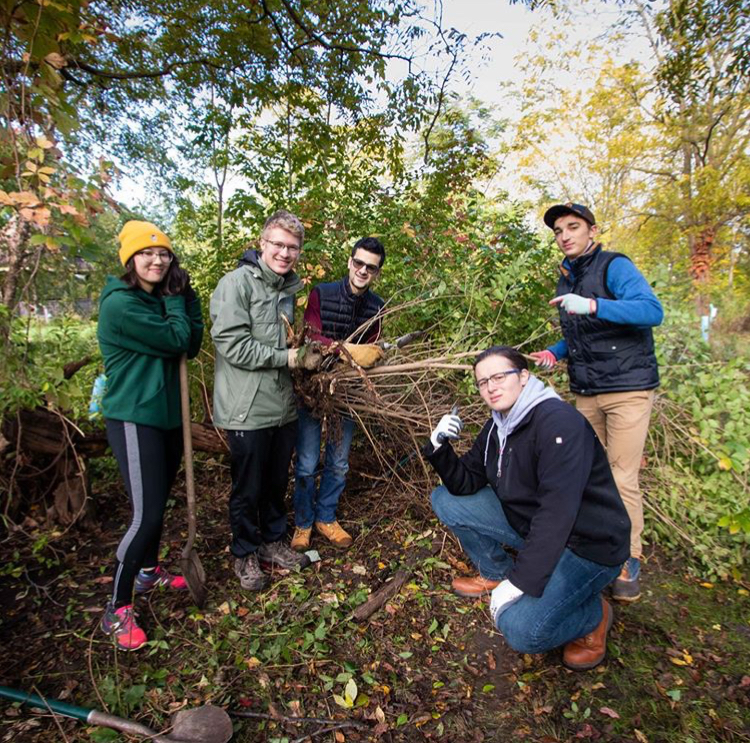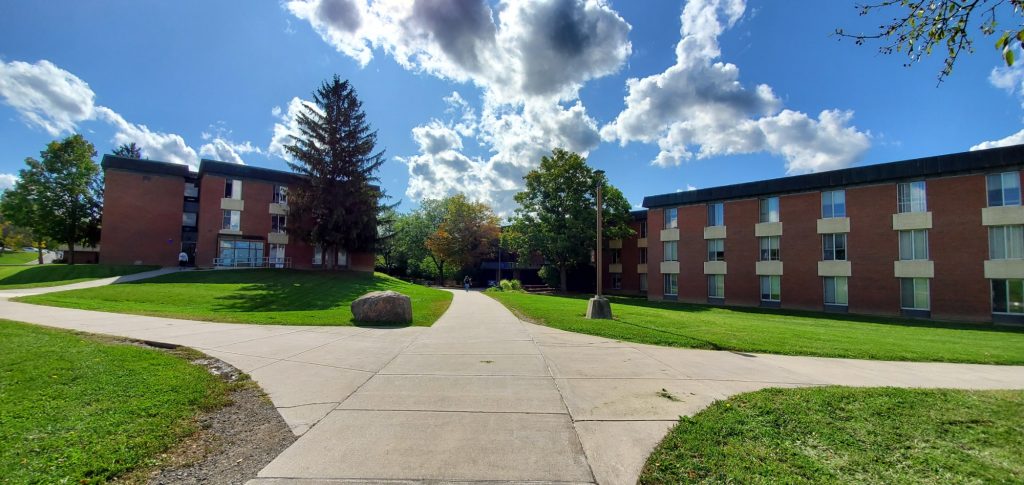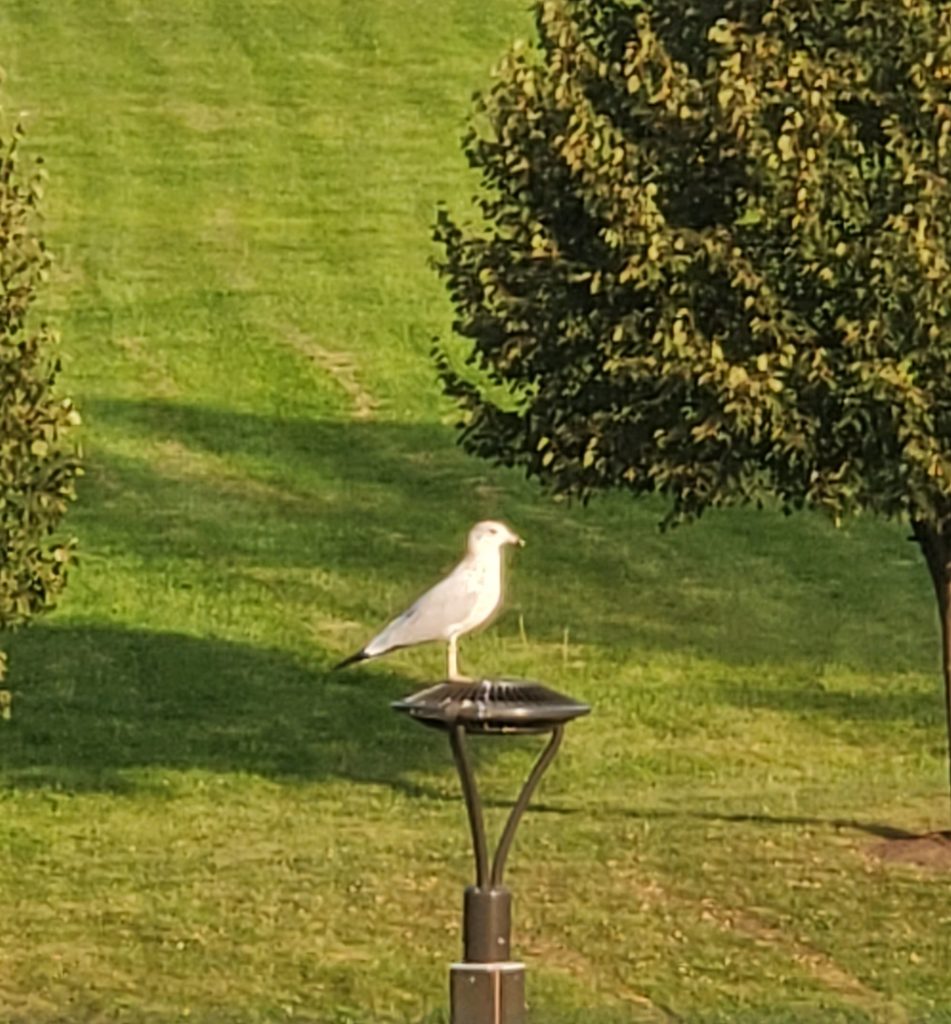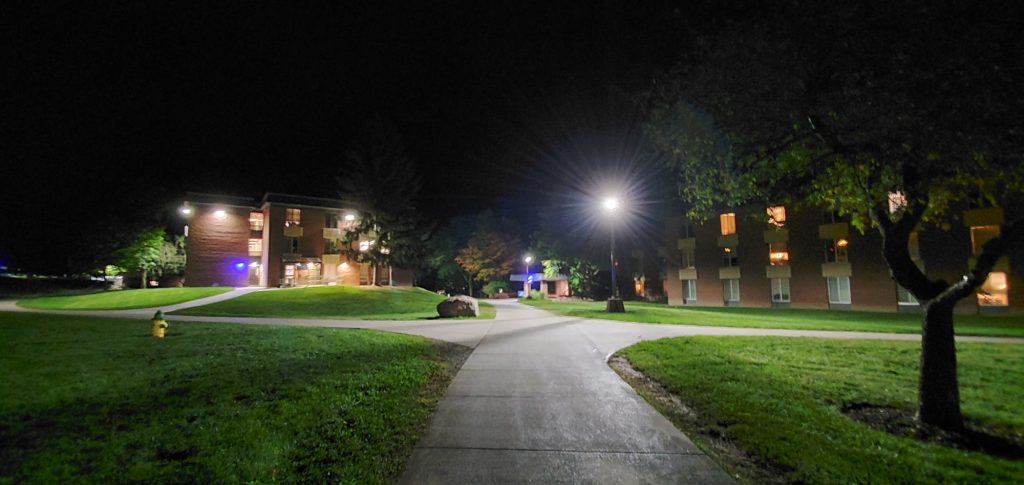My favorite part of Geneseo’s campus is the outdoor basketball court on north campus. The court’s tread is blue, and the nets on several of the baskets are shredded. The court’s location is close enough to the dorms to feel like it is part of campus, yet close enough to the athletic fields and woods to make a game of basketball feel more natural and relaxing compared to the same game indoors. The sunlight outdoors can warm one up on a cool day, and the wind can cool one off on a warm day. The best part of the entire experience is the sunsets I see while playing.
This court holds personal significance that predates my application to Geneseo. During my first visit here, I had few standards by which I judged colleges: campus layout, the quality of dorms, the quality of dining halls and recreational opportunities. The blue-top court first caught my attention when I toured the school in the Fall of 2018. It was close to a lot of residence halls and I specifically remember telling my parents that the court would be the factor that made me choose this school.
Fast Forward to my first day at Geneseo… as fate would have it, I ended up at the outdoor basketball court. Had I not played on that court the first weekend, I would not have met some of my best friends here. The outdoor court will always hold a special place in my heart; the fact that I can go there and always make new friends speaks to the importance of sports and the reach basketball has beyond being just a game. That–and the aforementioned reasons–is why the outdoor court is my favorite place on campus.
